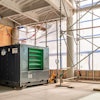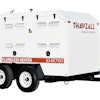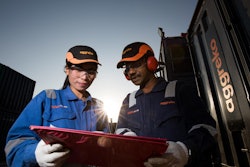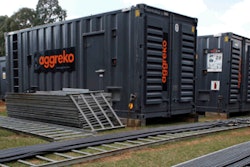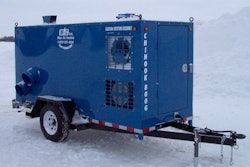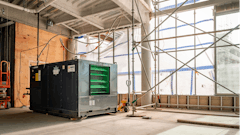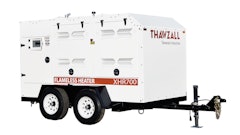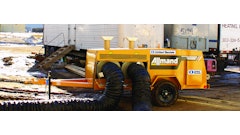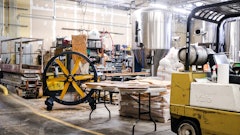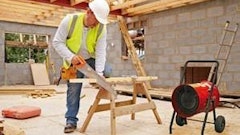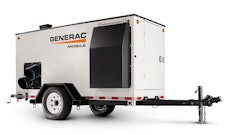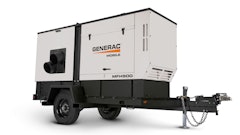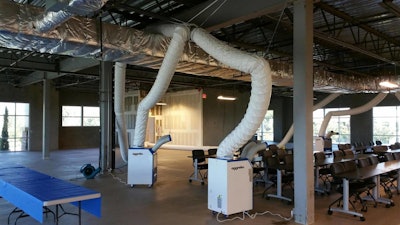
When spring is just around the corner and summer is on the horizon it’s easy to think about warm days and backyard barbecues, but this time of year can wreak havoc on new construction if the right systems aren’t in place.
Many materials used in construction absorb moisture. Problems intensify when the temperatures are warm heavy summer rains are in the forecast - requiring cooler and drier air to be distributed around the site and into buildings. Cooling the jobsite at this time of year is vital to ensure workers remain comfortable and materials don’t swell or warp in the heat.
The combination of heat and rain means new construction and jobsites are often difficult to keep dry during the spring and summer months. And, while some moisture is expected during construction, too much poses a range of risks.
To combat any moisture issues, there are a number of drying solutions you can turn to, including heaters and dehumidifiers. But when you add to this the need for cooling during warmer weather, there comes the issue of cooling as well as drying.
Cooling Construction in the Summer Months
Obviously, when the temperatures soar, you want to keep the jobsite cool, both for worker comfort and safety, and the installation and preservation of materials.
Spot coolers, fans, and A/Cs are often the go-to choice, but if the air change inside a job site is not properly controlled, maintaining the proper temperature and humidity levels becomes a more difficult task. As temperatures rise even higher in the summer, providing a cooler environment in one spot, multiple spots, or throughout the entire site can be critical. Cooling provides worker comfort and safety, which are always key to a successful project. But it also allows for proper material installation. Everything from the sheetrock and drywall mud, to the paint and flooring has a set of specifications for installation. And those specs define what the proper environment needs to be. Ignore those, and it’s an uphill battle to make it all work right.
Dehumidifying Construction in Summer
Dehumidification dries out excess water in materials and the jobsite. Though it is mostly used to counteract water damage (after floods or water leaks), it is one of the best ways to dry out extra moisture when the summer rains hit.
During the summer, humidity is often high and the air is saturated. If you’re not putting the right measures in place, you’ll probably have to do even more work to dehumidify the site. Whether you choose to integrate dehumidification into the cooling and heating system of a jobsite depends on how long the water has seeped into the building for and what the interior finishes and furnishings are. On top of that, it’s vital that you keep the air change minimal to stop any humid air coming in and making the situation worse. As mentioned previously, material specs dictate what the proper environment needs to be, and nobody wants to have to repaint a wall or reinstall flooring. All it takes is a little extra planning.
Drying Construction in Summer
Construction timelines try to factor in weather delays and conclude under the best possible conditions. However, with quicker and far more efficient processes, the drying process is needed to ensure all excess water has been expelled before the building is used.
The problem is that forcing the drying process can damage materials and set your schedule back even further. At times the process is rushed, where only the surfaces are dried, allowing excess moisture to stay or even develop within the walls, finishes, and interior furnishings.
Choosing a Cooling and Drying System and Solution for New Construction
With all of this to mull over, you might be wondering where to even start with cooling and drying your new construction.
The thing to remember is that every building will be different depending on the materials used to construct it and the furnishings that will be inside. During the summer months, it’s not just a case of turning on the air conditioner and hoping for the best, especially if you live in an area with a high amount of rainfall.
Add to this the fact that, when you’re constructing a new building, you have a limited amount of space onsite to incorporate a cooling and drying system, and it suddenly becomes an important component to think about.
Timing is of the essence when it comes to keeping moisture at bay in a new build, and there are three key things to bear in mind, especially in spring and summer:
- Cooling on the jobsite and how you’ll keep temperatures consistent and bearable during warmer temperatures
- Dehumidification and drying on the jobsite, and making sure any excess moisture is expelled in a timely fashion
- HVAC change-outs and repairs. Depending on how long the construction process takes, you might need to switch out your heating and cooling system and get repairs made on it quickly
There’s a lot to think about.
Rising temperatures in spring and summer and the increased chance of rainfall bring about a whole new set of challenges for cooling and drying new construction.
Then there’s the added challenge of finding enough space on your jobsite to integrate a cooling and heating system, and making sure your HVAC system can easily be repaired and switched out if needed.
Putting the right cooling and drying system in place can speed up the construction process and ensure the building is as high a quality as possible when it’s finished and ready to be occupied.
Keep your jobsite cool and dry this year with Aggreko cooling rentals.

